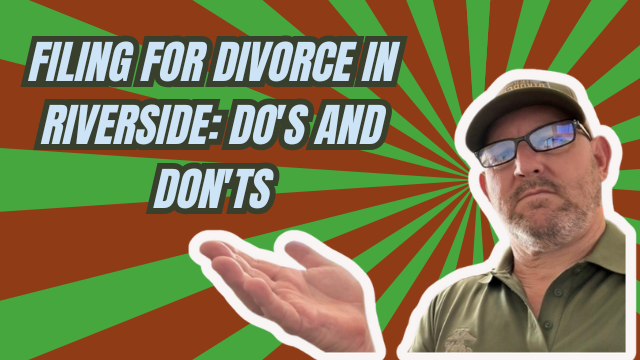Step-by-Step Guide to an Amicable, Court-Free Divorce in Riverside
I’m Tim Blankenship of Divorce661. In my video I walk through how couples can complete an amicable divorce in Riverside County without ever stepping into a courtroom. If you and your spouse are in agreement, the process can be fast, affordable, and handled entirely online. Below I explain the exact steps we follow, what you need to provide, and how we get a judgment approved with no hearings required.
Why a court-free divorce is possible in Riverside County
Riverside County allows uncontested divorces to be processed entirely through electronic filing and paperwork when both parties agree on all terms. As long as the case is amicable and all required documents are prepared and submitted correctly, the court can approve the judgment without any court appearances or hearings.
The five core steps to a court-free divorce
- File the petition and related documentsWe file the petition, summons, and UCCJA (if jurisdictional issues for children apply) directly with the Riverside Court using the county’s eFile system. Electronic filing gets the process started quickly and creates an official case number for the matter.
- Serve your spouseIn most amicable cases your spouse is served by mail, which avoids in-person process service and court appearances. Proper service is critical — it establishes that your spouse has received notice and starts the statutory timelines.
- Exchange financial disclosuresFinancial disclosures are required in every California divorce. Both parties exchange the necessary documents so the court can verify that asset division, support, and other financial terms are fair and complete.
- Draft and sign the Marital Settlement AgreementThis is the document that captures your agreements on property division, debts, support, custody and visitation (if applicable), and other terms. Once signed by both parties, it becomes the foundation of the judgment submitted to the court.
- Submit the judgment package for court approvalWe prepare and submit the final judgment package electronically. If everything is complete and accurate, the court signs off without hearings or appearances. That’s the moment your divorce becomes final.
What I handle for you
- Complete electronic filing with Riverside Court.
- Preparation and review of all required forms and disclosures.
- Drafting a clear, enforceable Marital Settlement Agreement tailored to your situation.
- Coordination of service and communication with your spouse when appropriate.
- Submission of the judgment package and follow-up until the court issues the final judgment.
Example: A stress-free, work-friendly divorce
“We handled their entire divorce remotely and their judgment was approved in just a few weeks. They never had to go to court and the entire process was stress-free.”
That’s a real example of clients who were worried about missing work for court dates. By managing every step remotely — filings, disclosures, and the settlement agreement — we completed their case quickly and with minimal disruption to their lives.
Common questions and quick answers
- How long does this take? When both parties cooperate and paperwork is complete, it can be resolved in a few weeks to under 30 days in many cases.
- Do I need a lawyer? You don’t necessarily need separate attorneys if the divorce is uncontested, but professional help ensures the paperwork is correct and your interests are protected.
- Are financial disclosures mandatory? Yes — exchanging financial disclosures is required in every California divorce to ensure transparency.
- What if we have children? Custody and child-related issues may require additional forms such as the UCCJA (or UCCJEA) paperwork to establish jurisdiction. We prepare those when needed.
Ready for a court-free divorce in Riverside?
If you and your spouse are in agreement and want a fast, peaceful divorce without courtroom drama, I can manage the entire process for one flat fee. We handle filings, paperwork, disclosures, and submission of the judgment package so you don’t have to worry about courthouse visits or complicated procedures.
To get started, schedule a free consultation with Divorce661. I’ll walk you through the process for your specific situation and explain next steps so you can move forward confidently and quickly.
Final thoughts
An amicable divorce in Riverside County doesn’t have to be stressful or time-consuming. With the right approach and accurate paperwork, you can complete the entire divorce remotely and have the court approve your judgment without any hearings. If you want a streamlined, court-free experience, I’m here to help.










